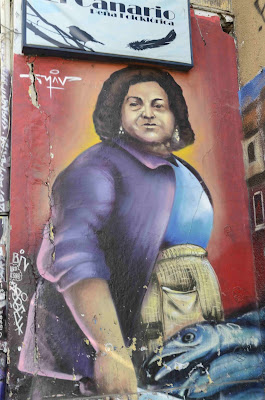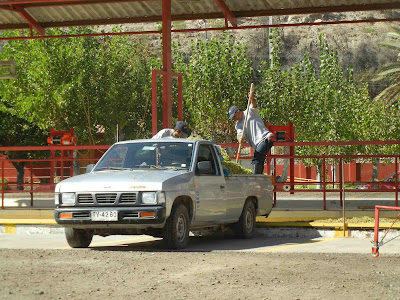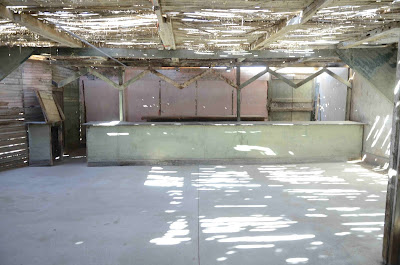Before 1870, Iquique was part of Peru. Chile won a war and gained territory including the area where saltpeter was mined. This town is a major port through which go auto parts for China and Japan as well the exports, guano, saltpeter, fish and copper.
This desert land is unlike any we have visited. It truly is desert, no plant growth visible. Average rainfall is 1 ml a year and the area had a 15 year period of no rain. The only source of potable water is 300 feet down. The iron red of the soil inspired Juan San Martin, the liberator of Peru, to design the Peruvian flag in red and white.
Our tour took us to the ghost town of Humberstone.
Starting in 1872 it was a prosperous mining town providing saltpeter that was used to produce nitrate for ammunition. By 1912, it produced 65% of the world supply of saltpeter, by 1935, 11 %, by 1975, .04 %. The abandoned town was restored in 2018 and is now a World Heritage Site.
Four thousand people lived in the town, 1200 workers and the rest family. Our guide acted as teacher in the school.
Workers were paid in script which could only be used at the company store. Most of the “money” was to feed the workers, wives and children got what was left. As there was always a shortage of credit at the end of the month, workers became increasingly in debt. This process was made illegal in the 1950s and the town closed in 1960 because workers could save money to move to other opportunities.
The “company store” provided all of the needs of the residents. One area shows recreations of the women’s store
meat market
Cantina where visitors left messages on the walls.
bakery
and a train.
This displays shows the difference between a worker’s meager supper and a supervisor’s luscious meal.
Children attended school until fifth grade. Most boys then went into the mine.
To get more education, the students had to move the another town and live in dormitories.
The pool was used by workers and their families.
There were several auditoriums to entertain residents. Today this one is used for school groups and campaign leaders
This public square was for courting.
Of course there was a Church
Leaving the ghost town, we next went to Pintados to follow the trail of 30,000 year-old geoglyphs or Arte Rupestre, rock art. They are of mixed media such as scraping surfaces and adding rocks. The creations are geomorphic, zoomorphic and anthroporphic. They were created by a mix of cultures who passed through or traded in the area or met to share celebrations..
The first section included marine animals
arrows indicating water
lizards
and, of course, penguins
































































